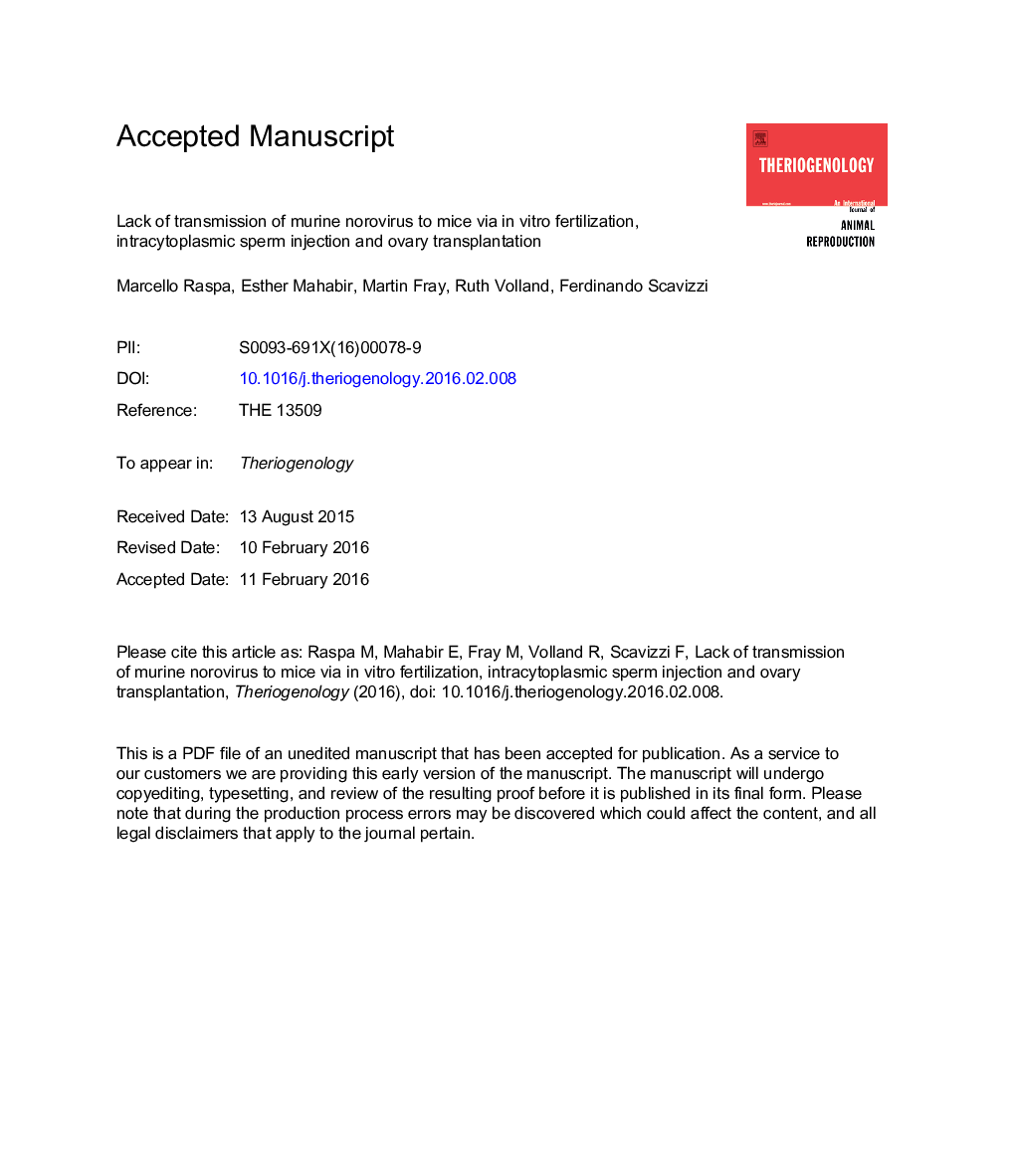| کد مقاله | کد نشریه | سال انتشار | مقاله انگلیسی | نسخه تمام متن |
|---|---|---|---|---|
| 10891578 | 1082050 | 2016 | 31 صفحه PDF | دانلود رایگان |
عنوان انگلیسی مقاله ISI
Lack of transmission of murine norovirus to mice via in vitro fertilization, intracytoplasmic sperm injection, and ovary transplantation
ترجمه فارسی عنوان
عدم انتقال نوروویروس موش به موشها از طریق تحرک داخل وریدی، تزریق داخلسیوپاتالاسمی اسپرم و پیوند تخمدان
دانلود مقاله + سفارش ترجمه
دانلود مقاله ISI انگلیسی
رایگان برای ایرانیان
کلمات کلیدی
موضوعات مرتبط
علوم زیستی و بیوفناوری
علوم کشاورزی و بیولوژیک
علوم دامی و جانورشناسی
چکیده انگلیسی
Since its discovery in 2003, murine norovirus (MNV) is still endemic in many rodent animal facilities. Our aim was to determine the risk of transmission of MNV (91% homology to MNV3) to embryo recipients and pups via assisted reproductive technologies, especially those which compromise the integrity of the zona pellucida. In vitro fertilization (IVF), assisted in vitro fertilization (AIVF) with reduced glutathione, intracytoplasmic sperm injection, and ovary transplantation were performed. Murine norovirus was detected by qualitative and quantitative reverse transcription polymerase chain reaction. After natural infection of immunocompetent C57BL/6NTacCnrm and immunodeficient athymic nude mice with MNV, the mesenteric lymph nodes, small intestine, spleen, liver, lung, brain, ovary, and testis were infected at specific intervals for more than a 1-year period. At Week 12, the number of viral genomes per milligram of gonad from both strains was 20 to 50. Murine norovirus strictly adhered to spermatozoa collected from infected mice because three washes did not remove MNV from the sperm. After using MNV-positive sperm for IVF, AIVF, and intracytoplasmic sperm injection, 27 to 30 genomes were detected in IVF (n = 100) and AIVF (n = 100) embryos from both mouse strains. Approximately 87% of MNV detected in these embryos was found in the zona pellucida. However, all embryo transfer recipients, pups, and ovary recipients were MNV-negative. The results indicate that manipulation of the germplasm through assisted reproductive technologies did not lead to transmission of MNV to mice. This may be because of the absence of an infectious dose or failure of the MNV strain to replicate effectively in developing embryos and the reproductive tract.
ناشر
Database: Elsevier - ScienceDirect (ساینس دایرکت)
Journal: Theriogenology - Volume 86, Issue 2, 15 July 2016, Pages 579-588
Journal: Theriogenology - Volume 86, Issue 2, 15 July 2016, Pages 579-588
نویسندگان
Marcello Raspa, Esther Mahabir, Martin Fray, Ruth Volland, Ferdinando Scavizzi,
